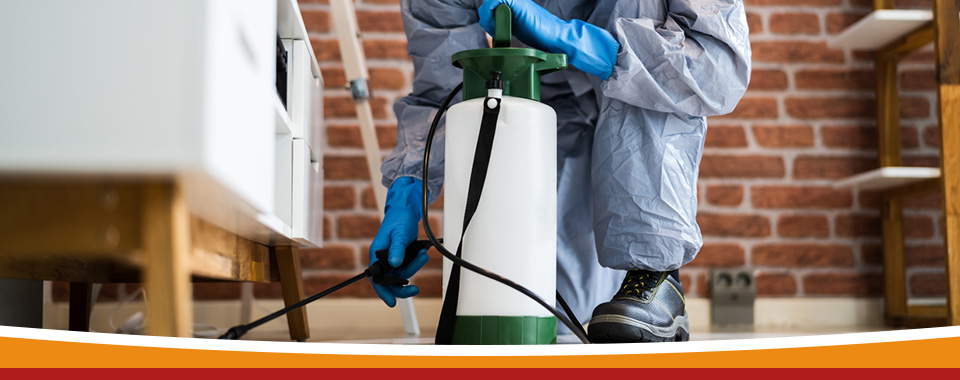Proven Bed Bug Heat Treatment: Remove Bed Bugs with Heat!
Proven Bed Bug Heat Treatment: Remove Bed Bugs with Heat!
Blog Article
Specialist Parasite Control Techniques for Long-Term Outcomes
Professional pest control strategies envelop a detailed technique that begins with a complete assessment and evaluation, followed by precise insect identification to recognize their habits patterns. The execution of Integrated Insect Management (IPM) principles, coupled with eco-conscious treatments, creates the foundation of lasting parasite obliteration.
Evaluation and Assessment
Upon going into a home for parasite control services, the preliminary action is a complete inspection and assessment to recognize the level of the infestation and identify one of the most efficient treatment strategy. Professional parasite control specialists are trained to meticulously check out the premises, seeking indications of pest activity such as droppings, gnaw marks, nests, or any kind of structural damages. They will certainly also evaluate the conditions that might be drawing in parasites, such as food sources, water leakages, or access factors.

Bug Recognition and Behavior

In addition, comprehending the behavior of the identified parasite is essential to implementing efficient control measures. Understanding where pests nest, what they feed on, and their task patterns can help pest control professionals create strategies to remove them efficiently.
Integrated Bug Management (IPM)
Integrated Bug Management (IPM) methods combine numerous methods to regulate and avoid bug infestations in a sustainable and eco-friendly way. bed bug exterminator. By integrating techniques such as organic control, habitat control, alteration of cultural practices, and using immune selections, IPM aims to lessen making use of chemical pesticides
One of the essential concepts of IPM is the focus on prevention. This aggressive strategy includes monitoring insect populations regularly to find any kind of possible problems before they escalate. By identifying insect issues early, pest control procedures can be executed quickly and successfully.
Moreover, IPM advertises the usage of safe bug control methods whenever possible. This can include employing natural killers of the insects, introducing helpful bugs, or utilizing pheromones to interrupt mating patterns. By minimizing dependence on chemical pesticides, IPM not only safeguards the atmosphere however likewise assists preserve a balance in the community.
Environmentally-Friendly Treatments
Executing eco-conscious techniques in insect control procedures can properly attend to invasions while prioritizing environmental sustainability. Environmentally-friendly therapies concentrate on decreasing the influence of bug control techniques on environments, non-target microorganisms, and human health and wellness. These approaches typically entail the usage of all-natural predators, such as ladybugs or nematodes, to regulate pest populations, reducing the demand for chemical interventions. Additionally, methods like habitat adjustment, such as changing moisture degrees or getting rid of food resources, can help prevent insects without making use of dangerous substances.
One more key facet of environmentally-friendly treatments is discover here using natural and naturally degradable products that damage down promptly without leaving unsafe residues in the atmosphere. Botanical insecticides originated from plants like chrysanthemums or neem use effective insect control while posing very little threat to non-target types. Employing techniques like warm therapies or scent catches can target details pests with precision, minimizing the total ecological influence of pest control practices.
Ongoing Tracking and Maintenance
Continual surveillance and upkeep are important elements of efficient insect control administration. Continuous tracking plays a crucial role in ensuring that insect invasions are found very early and taken site here care of immediately. Normal examinations by experienced specialists are essential to recognize any kind of indications of parasite task, examine the efficiency of previous treatments, and make adjustments to the pest control strategy as required. By monitoring pest populaces gradually, bug control professionals can track trends, prepare for possible problems, and execute preventive procedures to lessen the danger of future infestations.
In enhancement to monitoring, maintenance methods are essential for long-lasting parasite control success. This includes carrying out appropriate sanitation steps to eliminate possible food and water resources for bugs, sealing access indicate prevent bugs from pest control shop getting in the facilities, and dealing with any kind of architectural issues that could help with insect invasions (bed bug treatment). By integrating continuous monitoring and maintenance into an integrated pest management strategy, businesses can ensure a pest-free environment and guard their home against costly damage and health risks
Final Thought
To conclude, utilizing professional pest control techniques such as complete assessment and assessment, accurate insect identification and understanding of their habits, integrated parasite management approaches, environmentally-friendly therapies, and continuous monitoring and upkeep are necessary for accomplishing long-term outcomes in bug control. By executing these techniques, people can properly handle pest problems and preserve a pest-free setting in a sustainable manner.
Report this page